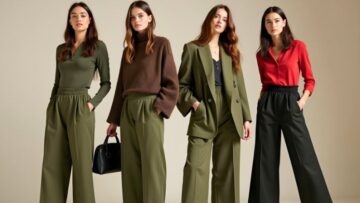
Nigeria and Egypt are charting the course to dominate the African fashion landscape, encompassing accessories, apparel, and footwear.
By the end of 2023, these two countries are expected to generate a staggering US $ 2.5 billion in revenue. Nairametrics’ analysis of Statista data projects that the Nigerian fashion market would grow to a US $ 1.31 billion industry.
The projected market volume is expected to increase at a strong rate of 10.03 per cent per year (CAGR 2023-2027), reaching an estimated peak of US $ 1.92 billion by 2027.
By 2027, it is anticipated that Nigeria will have a booming user base of about 83.8 million users. This is projected to increase from a user penetration rate of 24.4 per cent in 2023 to an outstanding 34.1 per cent by 2027.
Egypt’s fashion industry is expected to reach US $ 1.28 billion in 2023, continuing its upward trend. This market is anticipated to reach a market volume of US $ 2.35 billion by 2027, with a compound yearly growth rate (CAGR 2023–2027) increasing at an astounding 16.40 per cent.
Egypt is expected to have a user base of 56.4 million in the fashion business by 2027. Egypt’s user penetration, which is currently 33.3 per cent, is expected to soar to an astonishing 47.1 per cent by 2027.
Nigeria is in a unique position with demand exceeding most African countries due to its massive population of over 200 million.
The success of e-commerce fashion is also being propelled by the expanding internet culture among Nigerians, which is being fueled by a remarkable 222.5 million telephone customers estimated in 2022, per the National Bureau of Statistics (NBS).
With a population that exceeds 100 million and a youthful demographic that includes a sizable portion of people under 30, Egypt also has a sizable population. This group drives demand in the fashion industry since they are fundamentally more fashion-conscious and eager to spend money on apparel and accessories.
Egypt’s reputation as a top travel destination, which attracts travellers from all over the world, supports the fashion industry further because tourists frequently go shopping and buy local clothing and gifts.






